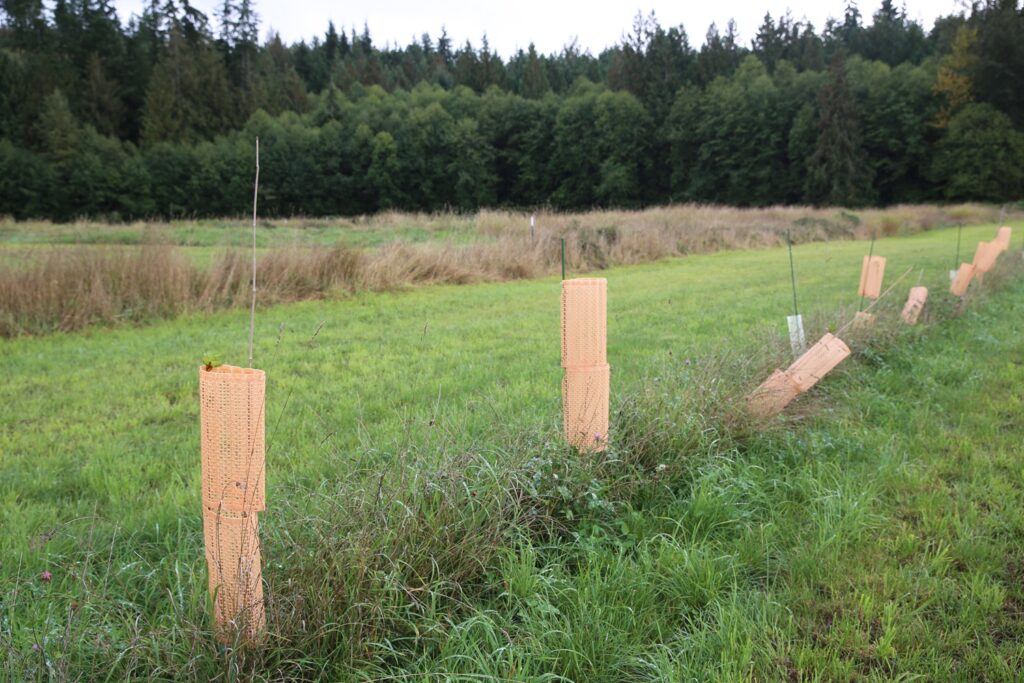Long-Term Maintenance
Thoughtful planning and attention is crucial for agroforestry.
After plants have been installed in a Wet Feet Farming or other agroforestry system, they will likely take three to five years before their root systems are fully established. This is a critical time where regular maintenance and attention to your planting will pay dividends in the long run. Some maintenance considerations include:
Mulching
Mulching can help with weed suppression, protect against temperature extremes, and minimize soil water losses around the base of each plant. Resources like this Guide to Mulches (WSU Extension C075) can provide you with information about the different materials to choose from and guidelines for use.
Irrigation
It’s important to remember that saturated areas can become extremely dry during the summer months. Even though the plants you’ve selected should be adapted to the soils on site, you may still need to provide supplemental water, especially during the first years of establishment. Check your local water rights regulations and find information to help you plan an effective irrigation system that fits with your budget by visiting the Resource Library of Irrigation in the Pacific Northwest (WSU Extension).
Plant Protection
Tubes and stakes can help protect individual plants and encourage proper growth. You may find greater peace of mind by installing a larger fence using t-posts and netting to protect against herbivore browse from deer. Learning more about the local wildlife populations and researching the most effective protection techniques in advance can increase the plant survival rate and save time later. Resources to check out: Plant Protection Devices & Solutions (WSU Extension) and Living with Wildlife Factsheets (WDFW).

Pest Management
Not every plant in your installation may be susceptible to the same types of pest damage. When selecting plants, research each species’ disease susceptibility. The use of an Integrated Pest Management System helps you use a combination of techniques, including setting action thresholds and monitoring, identifying, preventing, and controlling pests to manage damage. WSU Extension’s Integrated Pest Management page details common landscape, garden, and pest problems to be aware of.
Maintenance
Use this maintenance schedule for the first three to five years of establishment. Make adjustments as needed for the specific needs of your installation.
March
- Inspect existing plants, looking for pests, such as insects, mold, and fungus.
- Remove or replace damaged or diseased plants.
- Test your soils if you notice nutrient deficiencies, such as discoloration, improper growth form, etc., after the first year of planting in leaf tissue or new growth.
- Repair and replace damaged plant protectors.
- Remove competing species around the base of plants.
April
- Repeat any weeding around base of plants as needed.
- Apply mulch for weed suppression and moisture retention.
- Fertilize per soil test recommendations.
May
- Set-up irrigation system and develop irrigation schedule.
June- August
- Weed and water as necessary.
- Scout for pests.
September
- Weed and water as necessary.
- Scout for pests.
- Late season soil test.
December-February
- Adjust your planning each year based on your record keeping for both commodity and supporting plant species.
- Budget time and money into planning for harvest and storage options.
